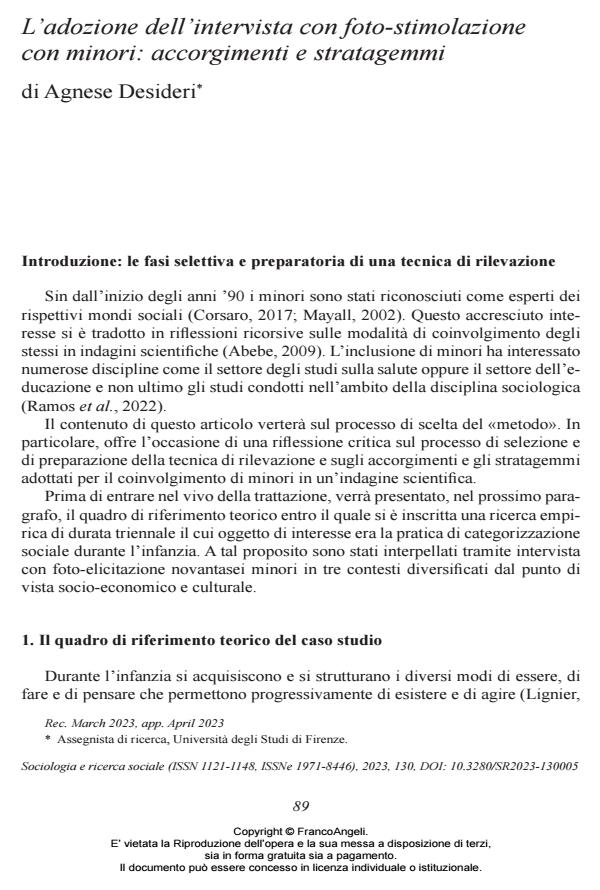L’adozione dell’intervista con foto-stimolazione con minori: accorgimenti e stratagemmi
Titolo Rivista SOCIOLOGIA E RICERCA SOCIALE
Autori/Curatori Agnese Desideri
Anno di pubblicazione 2023 Fascicolo 2023/130
Lingua Italiano Numero pagine 19 P. 89-107 Dimensione file 225 KB
DOI 10.3280/SR2023-130005
Il DOI è il codice a barre della proprietà intellettuale: per saperne di più
clicca qui
Qui sotto puoi vedere in anteprima la prima pagina di questo articolo.
Se questo articolo ti interessa, lo puoi acquistare (e scaricare in formato pdf) seguendo le facili indicazioni per acquistare il download credit. Acquista Download Credits per scaricare questo Articolo in formato PDF

FrancoAngeli è membro della Publishers International Linking Association, Inc (PILA)associazione indipendente e non profit per facilitare (attraverso i servizi tecnologici implementati da CrossRef.org) l’accesso degli studiosi ai contenuti digitali nelle pubblicazioni professionali e scientifiche
A. Desideri, (L’adozione dell’intervista con foto-stimolazione con minori: accorgimenti e stratagemmi) This essay reflects on ways of carrying out scientific investigations involv- ing children. These reflections emerged during a threeyear empirical study on the processes of social categorization, where ninety-six minors were inter- viewed through a photo-stimulation interview. The focus is on the selection and preparation of the detection technique. The photo-stimulated instrument will be analyzed in a comparative key with other detection tools, in order to highlight the potential but also the critical issues. The measures taken to involve minors will also be described.
- Children's social categorisation practices and family background Agnese Desideri, in WELFARE E ERGONOMIA 2/2024 pp.43
DOI: 10.3280/WE2023-002004
Agnese Desideri, L’adozione dell’intervista con foto-stimolazione con minori: accorgimenti e stratagemmi in "SOCIOLOGIA E RICERCA SOCIALE " 130/2023, pp 89-107, DOI: 10.3280/SR2023-130005